.
Amphorae were invented by the ancient Greeks and adopted by the Romans as the principal means for transporting and storing wine, oil, olives, grain, fish, and other commodities. They were produced on an industrial scale from Greek times and used around the Mediterranean until about the 16th century. They are of great benefit to maritime archaeologists, as amphorae in a shipwreck can often indicate the age and nationality of the wreck. They are occasionally so well preserved that the original contents are still present, providing invaluable information on the eating habits and trading systems of the ancient Mediterranean peoples.
The word amphora is Latin, derived from the Greek amphoreus (Αμφορέας) or amphiphoreus, a compound word combining amphi- ("on both sides") plus phoreus ("carrier"), from pherein ("to carry").
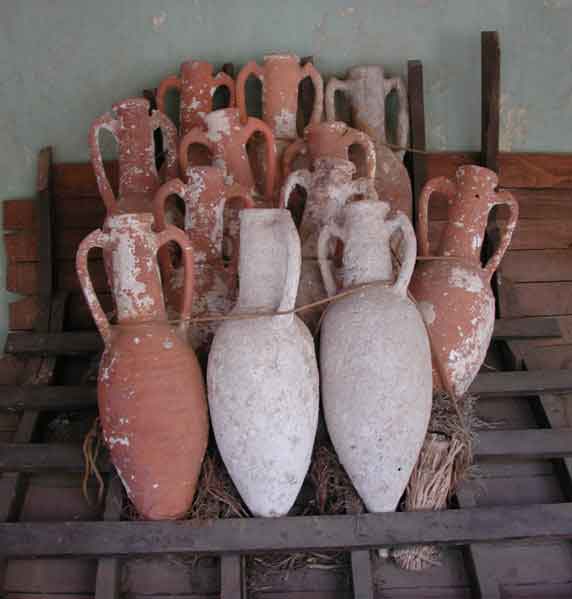
Amphoræ on display in Bodrum Castle, Turkey
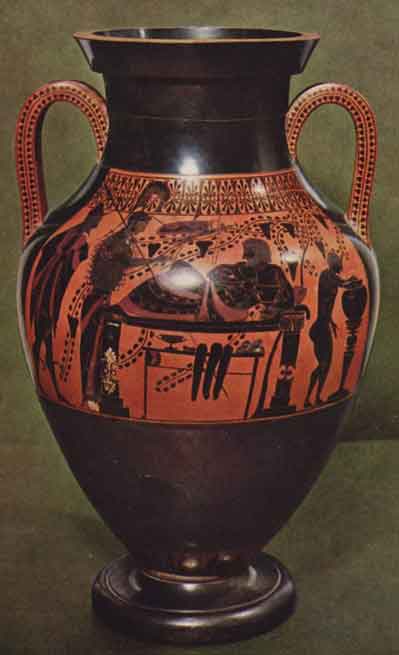
a)
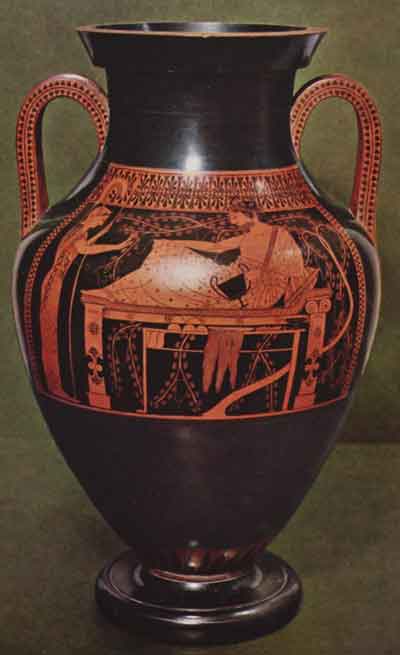
b)
Athene standing and Heracles on a cline, Amphora. c. 520 BC, red figure part, b) black figure part
Height 54 cm , München Antikensammlung, Germany
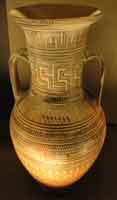
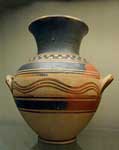
Amphora protogeometric BM A112
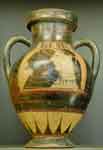
See also
| Ancient Greece
Science, Technology , Medicine , Warfare, , Biographies , Life , Cities/Places/Maps , Arts , Literature , Philosophy ,Olympics, Mythology , History , Images Medieval Greece / Byzantine Empire Science, Technology, Arts, , Warfare , Literature, Biographies, Icons, History Modern Greece Cities, Islands, Regions, Fauna/Flora ,Biographies , History , Warfare, Science/Technology, Literature, Music , Arts , Film/Actors , Sport , Fashion --- |
Retrieved from "http://en.wikipedia.org/"
All text is available under the terms of the GNU Free Documentation License

